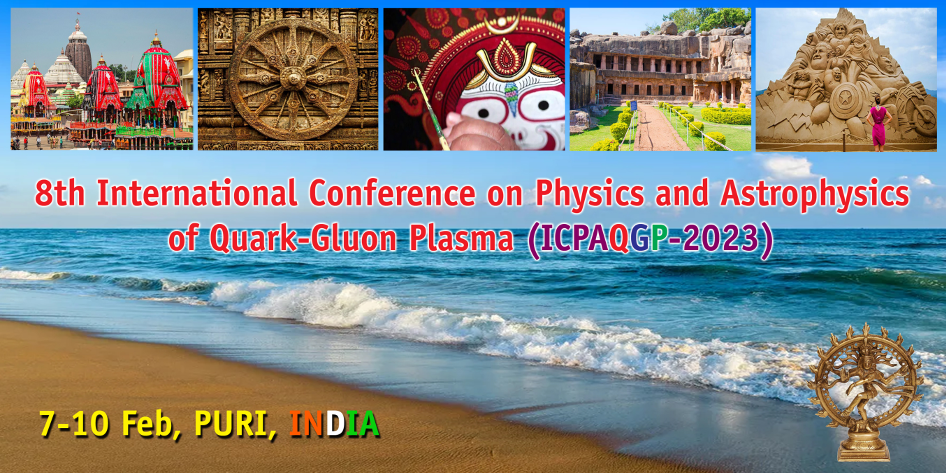Short-lived hadronic resonances with widely varying lifetimes provide an excellent tool to study the hadronic phase produced in relativistic heavy-ion collisions. They undergo rescattering and regeneration within the hadronic phase, which modifies their yields. The dynamics of these particles, especially the $K^*(892)^0$ meson, and thus varying yields have been used extensively to study the...
We show that the transverse mass and rapidity spectra of protons and pions produced in Au-Au collisions at sNN=2.4 GeV can be well reproduced in a thermodynamic model assuming a single-freeze-out scenario of particles from a spheroidally symmetric hypersurface. This scenario corresponds to a physical picture used by Siemens and Rasmussen in the original formulation of the blast-wave model used...
Directed flow is understood to be sensitive to the initial conditions of heavy ion collisions and is used to constrain the initial matter profile. However, in the present study we have shown the importance of the $v_1$ of resonances and light nuclei which probes some additional physics of heavy ion collisions. We have proposed a model for the initial energy and net-baryon density which is...
One of the outstanding problems in thermal QCD is to understand how and whether the heavy quarks produced in the early stages thermalize in the medium formed in a heavy-ion collision (HIC). Recent sets of experimental data point to the fact that charm quarks show the same collectivity as light quarks. In this study, we perform classical-statistical lattice simulations for relativistic charm...
Relativistic dissipative hydrodynamics is an efficient tool to explore the collective behavior of strongly interacting QGP (Quark Gluon Plasma) medium produced in heavy-ion collision experiments. This effective theory relies on some necessary microscopic inputs and relativistic kinetic theory often serves as the source. Within this statistical framework the dissipative quantities can be...
The correlation of dynamical density fluctuation has been investigated within the scope of the Mueller-Israel-Stewart theory. The dynamic structure of the density fluctuation without the presence of the magnetic field shows three Lorentzian peaks. The central Rayleigh peak is surrounded by two Brillouin peaks symmetrically situated around the Rayleigh peak. But with the presence of an external...
With the spectacular success of lattice techniques in establishing the phase diagram of strongly interacting matter described by Quantum Chromodynamics (QCD) at baryon densities $\mu_B/T<3$, it is now necessary to understand the nature and the interactions of the different phases. We revisit the problem of how well a model consisting of hadrons and resonances(HRG) up to 3 GeV with a repulsive...

